Learning How to Use JMAG
Are you interested in JMAG, but don’t know where to start?
Want to find out more?
“Learning how to use JMAG” is an introductory guide that will take you through a step-by-step process on how to start and use JMAG for the first time. Follow the program to learn the operations, the concept of modeling and to deal with problems.
A must-see for those who want to use JMAG!
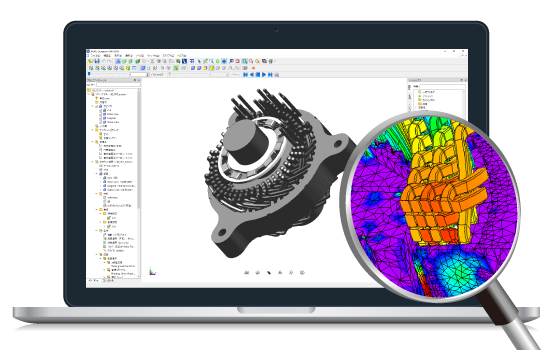
Program
How-To (1) Basic Operations and the Concept of Modeling
Refer to the key points in each procedure which describes the concept of “why the settings are set the way they are” in modeling.
Refer to the table below to select the one similar to what you want to analyze.
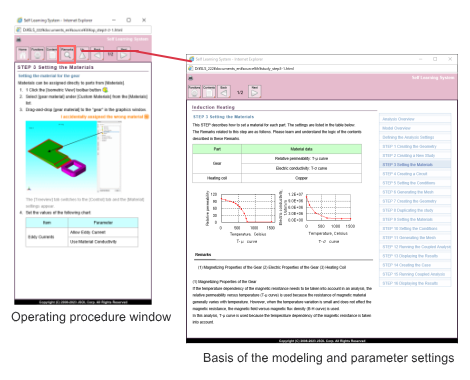
| Case Study | Steps to Study | |
|---|---|---|
| Motor | PM Motor > 2D Analysis | Up to STEP 11 |
| PM Motor > 3D Analysis | Up to STEP 8 | |
| Induction Motor | Up to STEP 8 | |
| Transformer | Transformer > Transformer Analysis | Up to STEP 8 |
| Linear Actuator | Solenoid Valve | Up to STEP 7 or STEP 11 |
| Induction Heating | Induction Heating | Up to STEP 16 |
| Sensor | Sensor | Up to STEP 7 |
| Wireless Power Transfer | Wireless Power Transfer | Up to STEP 9 |
- STEP 1 of SLS is about creating the geometry. If you are using CAD models, start from STEP 2.
- The program can also be started from the Windows menu. Click the Windows button, and select [JMAG-Designer] > [Self Learning System].
How-To (2) Working on your own assignments
JMAG has substantial technical material for use in finding solutions.
Refer to them when you are not sure about the concept of modeling or when using new functions.
We hope you will find them useful in finding solutions.
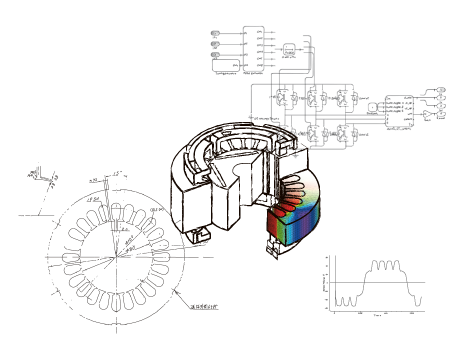
The JMAG Application Catalog
Learn how to create models for each of your objectives using applications.
The Application Note (explanations) and model data are provided.
The concept of condition settings is described in detail in the Application Note.
E.g.) How is the time interval determined?
・What should the number of divisions around the circumference be?
・What kind of settings are required to account for eddy current?
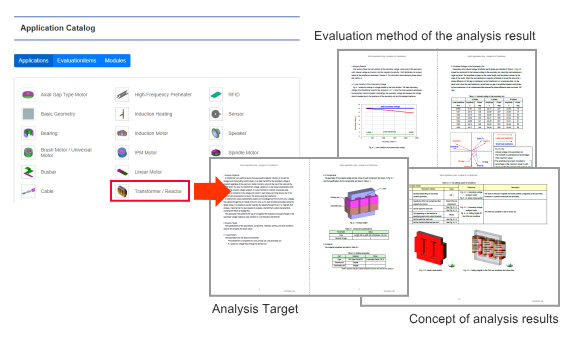
Find one that is similar to what you are working on and use it as a reference to create an analysis model.
- How to view the catalog
Select [Help] > [Application Catalog] in the JMAG-Designer menu bar.
JMAG Website:click here
- How to search for JAC
Search from [Applications] or [Evaluation Items].
- A license ID (or User ID) and password are required to obtain this data. Check with your administrator for the license ID and password.
Learning function operations with the “Self Learning System”
The Self Learning System explains more than just basic analysis. The procedures for parametric analysis and optimization and loss analysis are also provided.
| Topics | Steps to Study | |
|---|---|---|
| Parametric Analysis | PM Motor > 2D Analysis | From STEP 12 |
| optimization | PM Motor > 2D Analysis | From STEP 17 |
| Structural Analysis | PM Motor > Structural Analysis | |
| Thermal Analysis | Transformer > Thermal Analysis | |
| Loss Analysis | Transformer > Loss Analysis | |
| JMAG-RT | PM Motor > Control Circuit Simulation | |
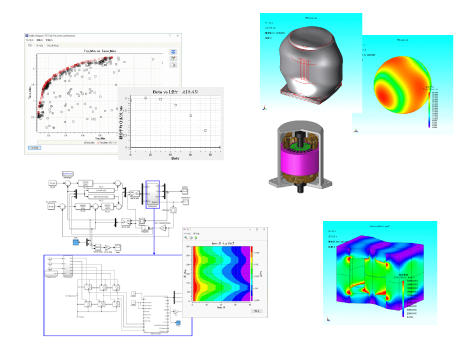
Extra Edition What to do when you have problems
As you study the program, you may come across things you don’t understand or have doubts about. If you do, take a look at the following contents. They may be helpful.
Instruction manuals for all JMAG functions. Help includes script descriptions. Search condition names or terms that you don’t understand how to use.
To view help: Select [Help] under [Help] in the JMAG-Designer menu bar.
Technical FAQ Frequently asked questions are available on our website.
Documents describing how to operate each function in JMAG. Reference manuals and model data are provided as a set.
Try the various JMAG functions.
Technical support from how to use JMAG, evaluating results, to applying designs are provided.
Applications are also accepted from the website, phone, or email.
Other Documents
Documents and services in addition to those introduced in the program are available.
Make use of the following contents and try out new functions.
